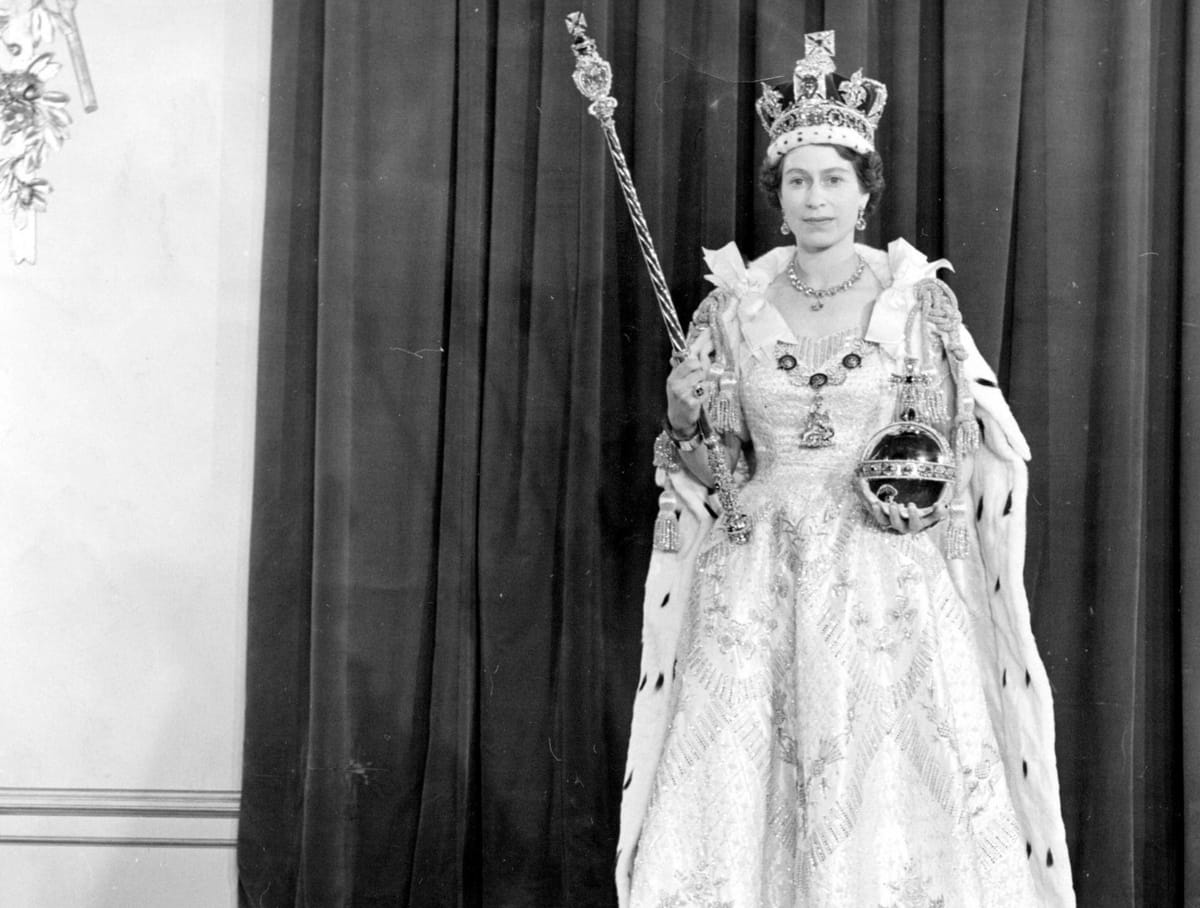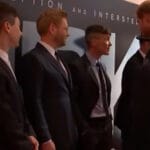With the recent coronation of the new British monarch, Charles III, an old story about the coronation of his mother, which took place 70 years ago, has once again been widely circulated on the Internet. We checked how true it is.
At the meeting held on May 6 coronation the new British monarch Charles III had no Russian guests: no government delegation, no representatives of the House of Romanov, no hierarchs of the Russian Orthodox Church. But at the celebrations on the occasion of the accession to the throne of Charles’s mother Elizabeth II in 1953, representatives of the USSR were present. As many Russian-language sources report, then young Elizabeth seemed to be so fascinated by the Soviet military sailor Olympius Rudakov that she honored him with a dance.
The story about the dance of Elizabeth and Rudakov is found in a large number of significantly different versions. According to the most extravagant, Rudakov presented the queen with an ermine robe as a gift from the USSR, and then not only became Elizabeth’s first partner at the coronation ball, but was later awarded a confidential tete-a-tete audience in a separate office. You can also often find statementsthat Rudakov turned the head not only of Elizabeth, but also of her younger sister Princess Margaret, who sent the gallant captain a huge bouquet of roses, and then even invited her on a ten-day trip to the castles of England. But the strict authorities allegedly gave Rudakov only two days.
The premiere issue of the project “Relatives"(author - Zakhar Prilepin) on the NTV channel. She was reported RIA Novosti And MTRK "Mir". After the coronation of Charles III, the case again actively circulated on social networks (Telegram, Facebook, "VKontakte") and other information resources ("Zen", "Airplane"). At least in part (with regard to the attention given by the queen to the Soviet sailor and the dance at the ball), the story was confirmed by Rudakov's sons Yuri (newspaper "Kazanskie Vedomosti"in 2021) and Boris (to the magazine "Companion" in 2007).
First of all, it should be noted that Olympy Ivanovich Rudakov is a very real person with a vivid biography. He was born in Kazan in 1913, in 1937 he became a cadet on the famous battleship Marat, on which he sailed to Britain to participate in celebrations in honor of the coronation of George VI, Elizabeth's father. In 1942, during the war, he was assistant commander on the destroyer "Crushing", which sank in the Barents Sea. Since the commander and his assistant were not the last to leave the ship, they were put on trial. Rudakov was demoted to private, but he distinguished himself so much in subsequent battles that he ended the war as a captain of the 3rd rank. In 1953, the Soviet leadership decided to send the brand new cruiser Sverdlov under the command of Rudakov to the celebrations on the occasion of Elizabeth’s coronation. The Soviet ship made a great impression on the British public. Correspondents from British, American and Australian newspapers who covered the ship review (e.g. Washington Post), noted the excellent training of the Soviet sailors who put the Sverdlov in its assigned place in the harbor in a record short time.
A detailed schedule of the ship review and accompanying events is given in the official booklet, which can be found in scanned form in Networks. The event was covered by numerous newspapers, and there is also a newspaper dedicated to it. newsreel. From these materials it is clear that the Sverdlov arrived at the Spithead roadstead near Portsmouth on June 10, that is, more than a week after the coronation took place on June 2. In the following days, Captain Rudakov received on board the Lord Mayor of Portsmouth and the leaders of the British-Soviet Friendship Society. Soviet sailors also attended several events ashore and on other ships. It is noteworthy that the President of the British-Soviet Friendship Society, Dean of Canterbury Cathedral Hewlett Johnson presented Captain Rudakov luxurious bouquet. It is possible that it was precisely because of this that the legend of the flowers from Princess Margaret later arose.
At the same time, it is clear from the program of celebrations that Elizabeth II arrived in Portsmouth on the evening of June 14, boarding her yacht, the frigate Surprise. There, on the morning of June 15, she received officials of the Admiralty and some senior naval officers. In the evening of the same day, a dinner was held on board the British battleship Vanguard with the participation of the Queen (from 20:30 to 22:30), then guests could admire the illumination of the ships stationed in the roadstead and fireworks. At about 11:15 p.m., the Queen returned aboard the Surprise and departed by train for London the next morning. Thus, it is clear that the official program of the naval review did not include a ball at which Captain Rudakov would have the opportunity to dance with the queen.
There is no mention of such an event in the English-language press. Rudakov, along with other captains, was introduced to the Queen and her husband, the Duke of Edinburgh, on the morning of June 15 on board the Surprise. This moment is captured in a photograph available today in several famous photo banks. Some newspapers, such as the Canadian Victoria Daily Times, noted that Her Majesty spoke for about a minute with the Soviet captain through an interpreter. Elizabeth's interest was quite understandable, since the Sverdlov became the first Soviet warship to arrive in the UK after 1937, and even at the height of the Cold War. The newspapers do not write about the presence of the Soviet captain at a dinner on board the Vanguard on the evening of June 15, and it was not possible to find group photographs from this event. But, judging by the depiction of him painting by J. Gilroy, it was a formal dinner, not a ball.
But the most important thing is that the legends about the British Queen’s dance with Rudakov and the special attention shown to him are also refuted by direct participants in Sverdlov’s visit from the Soviet side. Vitaly Zakolodyazhny, who served as a navigator on the cruiser at that time, published a small note about a trip to England in 2000 in the magazine “Sea Collection”. The main place in it is given to professional issues of navigation, including the staging of the Sverdlov in the roads. Zakolodyazhny describes the celebrations themselves quite briefly, but at the end he directly writes: “After the campaign, legends began to be born. For example, that, watching the setting of the cruiser fertoing (that is, on two anchors in a special way. - Ed.), the young queen was delighted and awarded the commander with a specially issued medal. Let me remind you that the Queen arrived in Portsmouth the day before the parade and therefore could not see our arrival... The Queen did not dance the first waltz with our commander, since there was no ball for foreign sailors with the participation of the Queen, and there could not have been. Three days before the Queen's arrival there was a traditional dinner and ball for foreign and British officers, given by the Commander of the Portsmouth base."
Another Sverdlov officer, engineer Boris Zubov, in his memoirs recalls in detail a dinner and ball in Portsmouth on June 12, which, according to him, was attended by “Queen Elizabeth II with her husband the Duke of Edinburgh and other members of the family, as well as senior figures of England, the First Lord of the Admiralty and the Commander of the Portsmouth Naval District.” He even vividly describes how the queen ordered Madeira to be poured into decanters and served to the guests from a barrel given to her directly at dinner by the Portuguese ambassador. In his story about the ball, Zubov writes: “The ladies, including very high-ranking ones, invited us to dance without giving us a break” - although he does not specify their names and titles. It is known that Zubov was even more eloquent in his personal stories. His son, the famous historian Andrei Zubov, remembers, as I heard from my father a story about a dance with Princess Margaret, the Queen’s sister. As if Zubov even received a gift for his wonderful dance. Alas, at least in this case, the memoirist clearly sins against the truth. In a note about the ball on June 12, a local newspaper Portsmouth Evening News (in larger publications this event was ignored) provides a list of notable guests present, especially highlighting Rudakov among the foreign captains. Neither Elizabeth II nor other members of the royal family were there. It is known that on the same day they attended a completely different event - organized by the Lord Mayor of London lunch in the City.
So, we can summarize that Olympy Ivanovich Rudakov, as captain of the cruiser Sverdlov, took part in the review on the occasion of the coronation of Elizabeth II on June 15, 1953 and on that day met the queen twice: in the morning, during a reception on board the frigate Surprise, when he spoke to her for about a minute through an interpreter, and in the evening, at dinner on the battleship Vanguard. None of these events included dancing. Soviet sailors did dance, perhaps including with noble British ladies, at a ball given on June 12 by the commander of the Portsmouth naval base, but there were no members of the royal family among the guests. However, this event gave rise to numerous legends that subsequently arose among sailors around the cruiser Sverdlov’s voyage to England. Let us note that stories about how Rudakov charmed representatives of the Windsor dynasty are found almost exclusively on the Runet. Almost the only text on this topic in English was published in Russian website.
Cover photo: Wikimedia Commons
Not true
Read on topic:
- Is it true that at a reception with the Queen of England, Gagarin ate a lemon in violation of etiquette?
- Is it true that the British recognized Vasily Livanov as the best Sherlock Holmes of all time?
- Is it true that the famous video shows young Elizabeth II throwing food to African children?
If you find a spelling or grammatical error, please let us know by highlighting the error text and clicking Ctrl+Enter.






